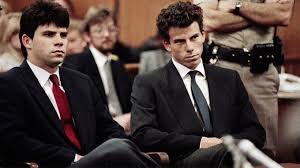The Menendez Brothers: A Chilling Tale of Family Tragedy and Crime

Introduction
The case of the Menendez brothers, Erik and Lyle, is one of the most infamous criminal cases in American history. Highlighting extreme familial conflict and psychological turmoil, the story raises critical questions about the influence of upbringing, mental health, and the judicial system. Their trial in the 1990s attracted significant media attention, and it remains a point of discussion regarding the complexities of family dynamics and crime.
The Events Leading Up to the Crimes
On the night of August 20, 1989, José and Kitty Menendez were brutally murdered in their Beverly Hills home. The perpetrators were later revealed to be their sons, Erik and Lyle, who were aged 18 and 21 at the time. Initially, the brothers presented themselves as the devastated children of a violent and dysfunctional family, leading investigators on a long path to eventual indictment. They claimed the murders were a response to years of severe abuse at the hands of their parents, a narrative that would become central to their defense in court.
The Trials
The men’s trials, spanning from 1993 to 1996, were marked by sensational media coverage and public fascination. The prosecution contended that the brothers murdered their parents to gain control of the family fortune, suggesting a premeditated plan to eliminate José and Kitty for financial gain. In contrast, the defense painted the brothers as victims of longstanding abuse, arguing that Erik and Lyle had suffered severe emotional distress and trauma, leading to a moment of insanity when they committed the acts. The complex blend of financial motive and claims of abuse made the case a nationally broadcast spectacle.
The Aftermath and Current Relevance
Ultimately, after two highly publicized trials, both Erik and Lyle Menendez were found guilty of first-degree murder and sentenced to life without parole. The case ignited a broader conversation about child abuse, mental health support, and systemic failures to protect vulnerable individuals. In today’s climate, discussions surrounding the Menendez brothers continue in various formats, from documentaries to podcasts, highlighting the ongoing intrigue and the search for understanding about the innate darkness that can reside within family relationships.
Conclusion
The story of the Menendez brothers is a complex interplay of tragedy, mental health, and the dynamics of familial relationships. As society progresses, this case reinforces the need for open dialogue around child welfare and the importance of addressing abuse within families. The Menendez saga serves as a chilling reminder that behind closed doors, violence can manifest in the very places meant to provide love and security.
